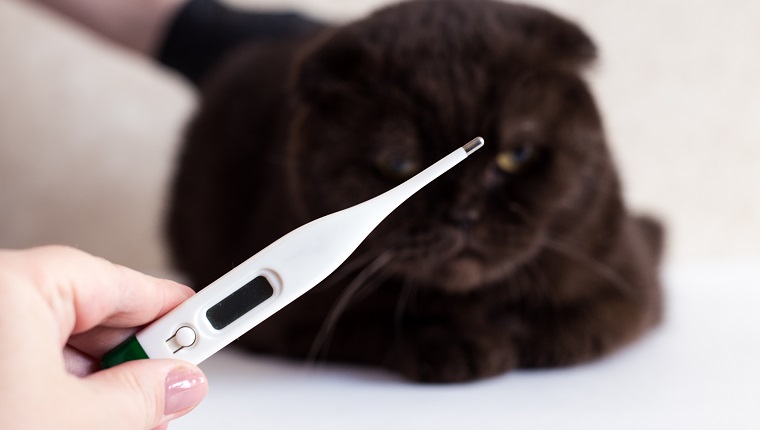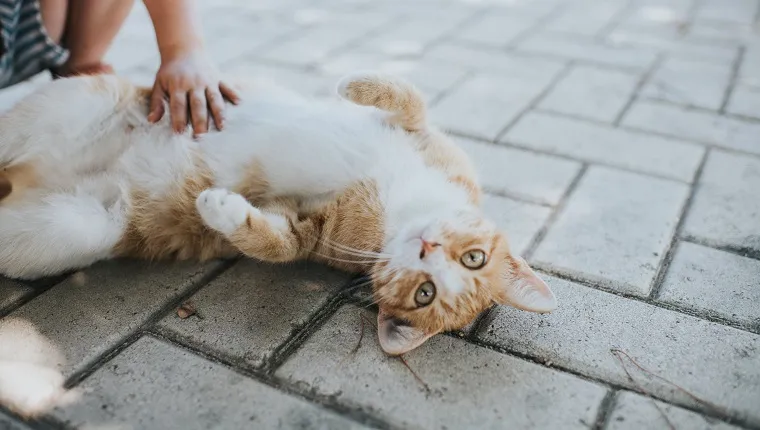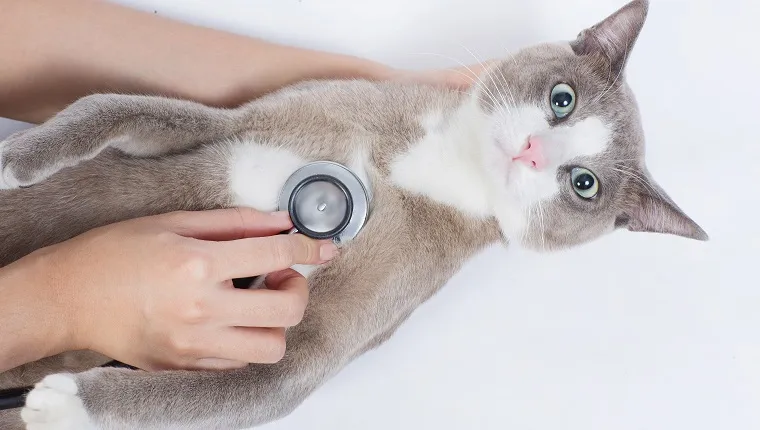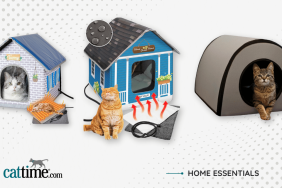What is a cat’s normal resting heart rate? What should a cat’s body temperature be? Is your cat breathing too fast?
These are questions that might have crossed your mind if you’ve ever found yourself caring for a cat who seems a little under the weather. The answers could prove vital if it seems like your cat’s pulse, temperature, or respiration aren’t what you think they should be.
If you do find that your cat’s health stats aren’t what you expected, then you must consult your veterinarian as soon as possible. That way, your vet can run further tests to make sure there aren’t any serious health concerns going on with your cat.
Here are a few normal stats that you should expect to see in healthy cats.
Normal Heart Rate For Cats

The normal heart rate for an average house cat is somewhere between 140 and 220 beats per minute.
Cats whose heart rates fall closer to 140 beats per minute are often felines with a more relaxed and easygoing demeanor.
How To Measure Your Cat’s Heart Rate
Measuring your cat’s heart rate is easier than you might think. All you need to do is approach your cat while they’re lounging happily and place your hand over their chest just behind the front leg.
Once you can feel your cat’s pulse, count how many heartbeats happen during a 15-second period. Multiply that number by four, and you’ll have your cat’s heart rate in beats per minute.
To be on the safe side, it’s best to measure your cat’s pulse a few times.
Changes In Your Cat’s Heart Rate
When it comes to changes in a cat’s heart rate, stress can be a large factor. This is why cats who have their heart rate taken at the vet’s office often register higher beats per minute rate.
Cats suffering from heart issues often have a higher heart rate as well.
Normal Body Temperature For Cats

The normal body temperature for a cat is somewhere between the range of 99.5 and 102.5 Fahrenheit.
If you notice that your cat’s body temperature either drops below 99.5 or rises above 103 Fahrenheit, call your veterinarian right away.
How To Measure Your Cat’s Body Temperature
To measure your cat’s body temperature at home, you’re probably going to need a rectal thermometer.
It’s advisable to use the rectal thermometer alongside medical lubricant; although, if you haven’t taken your cat’s temperature using such an instrument before, it’s best to let your vet handle the process so you don’t inadvertently injure the cat.
Changes In Your Cat’s Body Temperature
The main causes of changes in a cat’s body temperature are due to bacterial infections, issues with the immune system, and exposure to poisons and toxins.
In some cases, like during a vet visit, stress can also cause a cat’s body temperature to rise.
Normal Respiration Rate For Cats

On average, a cat will take 15 to 30 breaths per minute. This is the resting respiration rate, meaning the rate your cat breathes when they’re at rest and haven’t engaged in recent physical activity.
Note that if your cat has just finished up an exercise or play session, or their body temperature has risen, then it’s common for the respiration rate to also rise.
How To Measure Your Cat’s Respiration
Checking your cat’s respiration rate is a cinch. Simply count how often their rib cage rises and falls for 30 seconds, and then multiply that number by two. This will give you your cat’s respiration rate.
Just like taking your cat’s heart rate, it’s best to do this a few times.
Changes In Your Cat’s Respiration
One of the main concerns with a cat’s respiration rate increasing is that it could be an indicator of a heart condition.
Heat stroke and general respiratory issues can also cause a change in your cat’s respiration rate.
Remember that you should check all of your cat’s vitals at a time when you know nothing is wrong. That way, you can have a baseline to help you figure out when something is out of the ordinary. If you notice anything unusual about your cat’s vitals, contact your vet right away.
Do you ever check your cat’s vitals to make sure everything is okay? Do you have any tips for other pet parents? Let us know in the comments section below!









